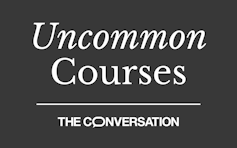

Uncommon Courses is an occasional series from The Conversation U.S. highlighting unconventional approaches to teaching.
Title of course
“Nonprofit Board Leadership”
What prompted the idea for the course?
When nonprofit board members don’t know what they’re supposed to do, they can fail to ensure that the organizations they are legally responsible for guiding are well managed. People without a good grasp of the responsibilities and logistics of board membership can have a less rewarding experience when they get this opportunity.
The late Sherry Wagner-Henry conceived of and designed this course when she served as director of the Bolz Center for Arts Administration at the University of Wisconsin-Madison Business School.
With input from a local consultant who worked with nonprofits, Wagner-Henry created a course to help graduate students prepare for nonprofit board service. The university’s Center for Community and Nonprofit Studies, which I direct, added this class to its repertoire in 2020.
What does the course explore?
Students get a basic overview of the way that nonprofits are structured and regulated. They also learn about ways in which their boards and their duties support the transparency and compliance of these organizations, which must serve the public.
Instructors provide clarity regarding boards’ fiduciary duties – broadly overseeing the organization and stewarding its assets – and other responsibilities, while delving into various aspects of board service. Students learn the basics of financial oversight, fundraising and revenue models for nonprofits. They also become familiar with legal obligations and the importance of diversity and inclusion policies, while learning how to run meetings.
What distinguishes this yearlong class from most others like it is that students get to temporarily serve on a board while they’re still in school.
In the fall, every student is matched with a nonprofit board and begins to sit in on board meetings. Students continue to explore and apply what they are learning in class as they participate in and observe their respective boards.
In the spring, students do a final project for their assigned organizations. These projects, which are requested by the boards, incorporate the best practices the course teaches.
Some good examples of these projects include: curating handbooks and orientation materials for board members, designing new board recruitment strategies and revising board assessment processes.
Why is this course relevant now?
Nonprofits play a huge role in American society – accounting for about 1 in 10 American jobs. The board members who oversee these organizations ensure that they adhere to their mission, comply with local, state and federal laws, and are sustainable for years to come.
Many of the people who serve on nonprofit boards have never had formal preparation for this role. That leaves them ill-equipped when a nonprofit gets into trouble due to fraud, declining revenue, mismanagement or personnel problems.
What’s a critical lesson from the course?
Students who participate in this class gain a real-life understanding of the importance of nonprofit boards and common issues that board members need to be ready to address. They get familiar with the required duties, see how boards make decisions, learn how to spot gaps in board governance, and gain expertise and skills that can strengthen a board’s operations.
What materials does the course feature?
“The Handbook of Nonprofit Governance,” published by BoardSource, is a core text. Students also read a variety of other sources selected for their relevance to segments and lessons of the course. These materials range from Nonprofit Quarterly articles to financial statements prepared by an accounting firm, Wegner CPAs, for its nonprofit clients. We sometimes assign relevant podcasts, such as episodes of “The Daily” on the National Rifle Aassociation’s financial and legal problems.
What will the course prepare students to do?
Students come away from this course ready to be responsible, effective board members with high standards. Several students have officially joined the boards they have worked with through this class – including a school and an organization supporting Black fathers. Others have been hired by an organization after temporarily serving on its board while enrolled in this course.
Mary Beth Collins does not work for, consult, own shares in or receive funding from any company or organization that would benefit from this article, and has disclosed no relevant affiliations beyond their academic appointment.
This article was originally published on The Conversation. Read the original article.






